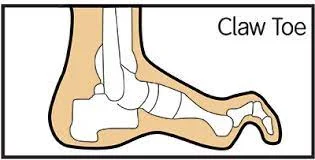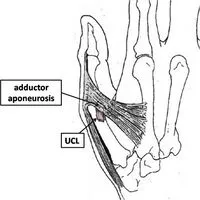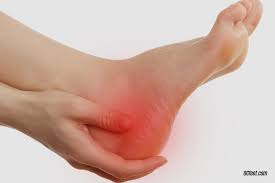A Runner’s Guide to Plantar Fasciitis: How to Prevent, Treat, and Manage the Pain
Plantar fasciitis is a common and often debilitating condition that affects the feet, particularly the heel and arch areas. It is characterized by intense heel pain, especially in the morning or after periods of rest, making activities like running a painful challenge. This condition can be frustrating for athletes and fitness enthusiasts, as it can hinder their training and performance.
In this guide, we will explore what plantar fasciitis is, its causes, symptoms, and most importantly, how to manage and potentially alleviate the pain while continuing to pursue your passion for running. By understanding the intricacies of this condition and implementing effective strategies, you can regain your stride and get back on the track pain-free.
Table of Contents
What is Planter Fasciitis?
Plantar fasciitis is a common foot condition characterized by intense heel pain, particularly in the morning or after periods of rest. It results from inflammation of the plantar fascia, a thick band of tissue that runs along the bottom of the foot, connecting the heel bone to the toes. This condition can significantly impact mobility, making it painful to walk and run.
Running is an energizing, liberating, and thrilling workout, but it can also be difficult. For those who have plantar fasciitis, this can be especially true.
If you have plantar fasciitis, a degenerative irritation of the ligament connecting the front of your foot to your heel, you already know how painful it can be to step on a hard surface or even just get out of bed.
While it’s always advisable to take it easy, many runners question if they can still log kilometers while suffering from a case of plantar fasciitis.
The pros and cons of running with plantar fasciitis are discussed here, along with advice on how to continue exercising despite experiencing just minor discomfort.
What Causes Of Planter Fasciitis in Runners?
The deterioration of the plantar fascia at its point of origin on the heel bone results in plantar fasciitis, an overuse injury. The plantar fascia lifts the foot arch via the “Windlass Mechanism” to stop it from collapsing due to weight-bearing and ground response forces.
Additionally, the plantar fascia disperses stress throughout the foot to aid shock absorption during weight-bearing movements like running and jumping. The tibialis posterior muscle, among several others in the foot, also aids in shock absorption. All of the strain is placed on the plantar fascia due to these tissues’ weakness. If the footwear is worn out and less able to support the wearer, this will be a problem.
What Risk Factors for Plantar Fasciitis?
Abnormal foot pronation: Normally, the foot rolls a bit inward or pronates when it touches the floor. However, excessive pronators increase pressure on the inside foot, which can cause strain on the plantar fascia. People with flat feet (pes planus) frequently pronate their feet excessively.
Pes cavus, or high arches: Keeping a high arch may impose strain on the plantar fascia, which helps keep up the foot’s arch.
Weak muscles in the plantar flexors: The intrinsic muscles of the feet are those that run parallel to the plantar fascia on the bottom of the toes. The plantar fascia may be overworked if these muscles are inadequate.
Running: Just a few kilometers of jogging causes the plantar fascia to expand and contract thousands of times. Running will hurt if the fascia is irritated or if microtears are occurring with every move.
Being Overweight: Carrying extra weight increases the strain on your plantar fascia and the risk of injury.
Some Exercise: Running and jumping-heavy exercises and activities raise your chance of developing plantar fasciitis. This comprises basketball, netball, football (AFL and rugby league), rugby, and running (middle and long distances). Some dance genres, such as ballet, are more common than others.
Some Professions: Plantar fasciitis is more common in jobs requiring long standing or walking periods. This includes certain retail and hospitality employees and factory and academic staff members.
What are the Symptoms of Plantar Fasciitis in Runner?
- Heel pain that is piercing or throbbing
- Depending on the cause, the arch may feel sharp, stabbing, or hurting
- Having trouble getting out of bed and walking in the morning
- The same problem after prolonged sitting, but the discomfort goes away with movement
How to identify plantar fasciitis?
- A medical diagnosis of plantar fasciitis is made. Rarely does it need to be looked into further. On the other hand, the distinctive stabbing sensation on the bottom of the foot is frequently diagnostic. Your toes might feel numb, and your foot might have less sensation. But for the majority of us, the symptoms go away after a year.
- Your doctor could advise having imaging studies done if you have excruciating pain or if the problem doesn’t get better over time.
- An ultrasonic examination is the initial imaging technique. The average plantar fascia thickness as determined by ultrasonography is between 2 and 3 mm. People who experience persistent heel pain may have thicker plantar fascia.
- There may be a fluid accumulation in this fascia. This has an impact on thickness. Plantar fasciitis can be diagnosed if the plantar fascia thickness is greater than 4.0 mm. Additionally, it may judge the quality and thickness of the fat pad that cushions the bones in your foot. It can also pick up tibialis posterior or peroneal tendonitis as additional reasons for ankle or heel discomfort.
- Your doctor can determine whether you have heel spurs, a stress fracture, unicameral bone cysts, or giant cell tumors with the aid of a lateral X-ray of the ankle. An MRI is performed if conservative therapy fails. In addition to showing how the fat pad and plantar fascia are doing, an MRI can evaluate less common causes of heel pain, including osteomyelitis, subtalar arthritis, bone bruises, and as well as bone and soft tissue tumors.
Can I Run with Plantar Fasciitis?
There are various types of plantar fasciitis. Mild plantar fasciitis can sometimes be “pushed through” by runners, who continue their workouts as usual while using orthotic inserts and icing to treat the underlying source of the issue. Others may find that jogging makes their plantar fasciitis worse or makes walking and running nearly impossible due to the extra damage that running can do to the ligament.
If your discomfort is severe, it’s advisable to begin by taking a few days off from engaging in strenuous activities; however, if your plantar fasciitis is minor or moderate, you should be able to run without risk.
Physiotherapy Treatment
Following are six exercises for heel pain and plantar fasciitis:
- Plantar fasciitis is a condition characterized by heel pain as a sign. Even though it can impact people of all ages and abilities, runners and those who spend a lot of time on their feet are more prone to encounter it.
- According to research, exercise regimens that include both stretching and strengthening activities, such as stretching the Achilles tendon, can dramatically lessen discomfort and enhance walking in persons with plantar fasciitis.
A physical therapist can create a treatment plan for you if you experience heel discomfort or have been diagnosed with plantar fasciitis. Included in the treatment are:
- Analyzing your gait and training it.
- Advice on when to use ice to treat pain and inflammation.
- Your foot should be temporarily taped for pain alleviation.
- Advising the use of sleep splints, supportive footwear, or shoe inserts.
- Teaching you precise strengthening and stretching techniques.
Plantar Fascia Massage
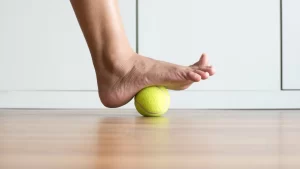
- Sit in a chair or stand with one foot on a little ball or frozen water bottle. A water bottle that has been frozen is helpful since the ice lowers inflammation.
- Under your foot, roll the ball or water bottle slowly forward and backward. You should begin right under your foot’s ball and finish just before your heel.
- Ten times for each foot, gently roll the ball or bottle back and forth. Make two sets for each foot.
- Perform this workout once every day.
Heel Raise

- Placing your feet on the balls of the steps can help you to balance.
- Lower your heels slowly and carefully till they are just below the step’s edge while leaving your heels swinging off the edge. Your calf muscle might feel stretched.
- Get up onto your feet’s balls gradually.
- 10 times total, then take a break. This exercise should be done twice.
- Perform this workout once every day.
Floor Sitting Ankle Inversion With Resistance

- Straighten your legs in front of you while you sit erect on the ground. Avoid moving your hips at all costs when performing this exercise.
- With a band of resistance wrapped around your upper foot and looped over the bottom of your lower foot, cross your left leg over your right leg. You ought to grasp the band’s end in your palm.
- With the resistance band wrapped around your upper foot, slowly distance the lower foot from the upper foot. Turn your ankle inside, then slowly bring it back to the starting position.
- A pair for each foot should be repeated ten times.
- Perform this workout once every day.
Seated Toe Towel Scrunches
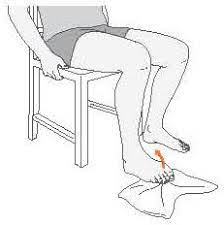
- Spread your toes while sitting erect in a chair with one foot resting on a towel.
- Draw the towel towards you ten times while scrunching your toes. Make two sets for each foot.
- Perform this workout once every day.
Seated Plantar Fascia Stretch
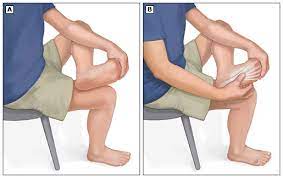
- Put one leg over the other knee while sitting in a chair such that your ankle is on top of the other leg.
- Pull your toes backward till you feel a stretch at the bottom of your foot while supporting your ankle with one hand and your toes with the other.
- After maintaining this position for 20 seconds, alternate between each foot three times.
- Perform this workout once every day.
Wall-Facing Calf Stretch
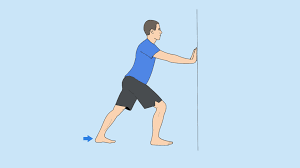
- As you face the wall, straighten your body and place your hands flat against the surface.
- Raise one leg straight backward while keeping both feet flat on the ground. Flex your front leg until you notice a stretch in your rear leg’s calf.
- Pause for 20 seconds, then move both legs three times.
- Perform this workout once every day.
Foot Care for Runners with Plantar Fasciitis
Proper foot care will help you run safely, prevent aggravating your plantar fasciitis, and prevent other problems like stress fractures, sprains, shin splints, and back discomfort whether you’re a beginner or seasoned runner:
- Warm Up Well Before Running
Any safe workout needs a decent warm-up, but that doesn’t mean you have to sit still and stretch every muscle! Your warm-up should aim to progressively raise your heart rate, increase the range of motion in your key joints, activate more capillaries, and make your tendons and ligaments more elastic. - Lunges, squats, and leg swings are good exercises to “wake up” your hip flexors and legs during a conventional running warm-up. However, during your warm-up, you should pay particular attention to your ankles, calves, and plantar fascia ligament if you have plantar fasciitis.
- If you have plantar fasciitis, the following activities should be incorporated into your running warm-up:
- Calves are raised
Toes pointed and flexed
circles on the ankles
Regularly Extend your legs and feet.
Even while warm-up stretches are crucial, avoid the error of merely stretching your legs and feet just before a run. Spending some time stretching your calves, thighs, and feet will help your muscles become stronger, more flexible, and less painful from plantar fasciitis. Learn a few simple stretches right here.
- Ice After Your Workouts
Try elevating and icing your feet after your cool down if you think you could have heel pain after a long run. If you are still having heel pain in the evening, ice for another 10-15 minutes. - You can ice your feet in a variety of methods. Use ice therapy slippers, or place your feet in a bucket of ice water. A bag of frozen vegetables may also be held to the sole by some individuals.
- Listen to Your Body and Rest Regularly
Listening to your body is crucial when you have plantar fasciitis, especially if you want to maintain an active, healthy lifestyle. It’s all right if you occasionally need to tone down the intensity of your workouts or take some extra days off to recover. Decrease the intensity of your workouts until you are confident that you can finish them without getting injured. - Running shouldn’t make you feel in horrible pain; it should make you feel healthy. Make sure to pay close attention to your body’s signals and take extra care of your feet if you have moderate plantar fasciitis. Allow your feet time to heal and recover between runs by taking rest days.
- Address Foot Pain Immediately
- Running is known for making foot and heel discomfort worse by ignoring it. You can avoid or lessen plantar fasciitis, runner’s heel, and other ailments by acting quickly if you experience pain or, even better, by preventing it by using these foot care suggestions.
- Keep Feet Moisturized but Dry
After you shower, moisturize your feet to prevent them from drying out and prevent friction from rubbing on your socks, which can cause blisters and cause your gait to shift as you try to prevent the new painful hotspots. - Applying moisturizer just before a run is not advised because keeping your feet dry will prevent fungal issues like athlete’s foot.
- Support and Cushion Your Feet
Utilizing orthotic inserts like heel seats, which elevate and straighten the foot’s arch and cushion the heel, is one of the greatest ways to take care of your feet as a runner. These distinctive orthotic inserts, which offer lighter, more affordable support than orthotic shoes, slide into your favorite pair of shoes. - Additionally, the use of orthotic inserts can help to correct minor gait flaws like pronation or supination, which can add to the wear and tear on your arch.
- Try Taping
- Try taping your feet to help avoid or manage the pain of heel spurs or plantar fasciitis. Additionally supporting the fascia and heel, improving blood flow and circulation, and reducing swelling and inflammation with mild compression are all benefits of taping.
- Avoid Running on Hard, Uneven Surfaces
- Run on smooth, even surfaces as much as you can to reduce the strain on your feet. When you increase the length of your runs, do so gradually; doing so can prevent your feet from becoming overworked too soon.
- Try Using a Sock Night Splint
- Plantar fasciitis can help reduce swelling and morning pain by wearing a sock night splint, a supple night splint that stretches your foot or feet while you sleep. The muscles and tendons in your feet stiffen up when you sleep because they aren’t moving. With a night splint, you can stretch them and prevent or significantly lessen tightness and pain the next day.
- Anti-inflammatories
- Inflammation can be reduced with the aid of Motrin or Aleve. Massage. It can also be beneficial to roll your heel and arch over a golf ball for 10 to 15 minutes each day.
- New shoes
- It could be time for new running shoes if your current pair has more than 600 miles on them. You can potentially overpronate because you’re wearing shoes that aren’t appropriate for your foot type. exercise variations. Biking and swimming are both excellent cardiovascular exercises that are gentle on the plantar fascia.
Tips For Preventing Plantar Fasciitis From Returning
Consider the following advice to stop plantar fasciitis from returning:
- Keep your mobility and strength (don’t stop exercising, but you can cut back on how often you do them if you’d like to!)
- Avoid abruptly increasing your mileage or running intensity. To guarantee a correct and steady increase in exercise volume, stick to your training schedule. (If you’re searching for a place to start, take a look at our free training programs!)
- Run on a variety of surfaces
- Track the number of miles you put on your sneakers.
Summary:
In conclusion, incorporating running into your routine to address plantar fasciitis can be a beneficial strategy for many individuals. It offers several advantages, such as improved cardiovascular fitness, weight management, and mental well-being. However, it’s essential to approach running with caution and implement specific precautions to minimize the risk of exacerbating plantar fasciitis symptoms or causing further injury. These precautions may include proper footwear, gradual progression, and a focus on stretching and strengthening exercises for the feet and lower legs.
Furthermore, consulting with a healthcare professional or physical therapist before embarking on a running regimen is crucial. They can provide personalized guidance and recommend the most suitable approach based on the severity of your condition and your individual needs. In some cases, alternative forms of low-impact exercise, such as swimming or cycling, may be more appropriate during the initial stages of plantar fasciitis recovery. Ultimately, running can be a valuable part of a holistic approach to managing plantar fasciitis, but it should be undertaken carefully and with expert guidance to ensure that it supports your overall health and well-being while addressing the specific challenges posed by this condition.
FAQs:
What can I do to alleviate pain while running with plantar fasciitis?
You can try wearing supportive shoes with arch support, using orthotic inserts, and doing specific stretching and strengthening exercises for the foot and calf muscles. Additionally, consider using ice and anti-inflammatory medications as recommended by your doctor.
Is it better to run on soft or hard surfaces with plantar fasciitis?
Softer surfaces, like grass or a track, can be less impactful on your feet compared to concrete or asphalt. However, the choice ultimately depends on your comfort and how your body responds. Some individuals with plantar fasciitis find relief on softer surfaces.
How should I warm up before running with plantar fasciitis?
A proper warm-up is crucial. Gentle stretching exercises for your calf muscles and the plantar fascia, as well as foot mobility exercises, can help prepare your feet for running.
Can I continue participating in races with plantar fasciitis?
Participating in races may be possible, but it depends on the severity of your condition. Consult with your doctor or a physical therapist to determine if it’s safe and advisable.
When should I consider taking a break from running?
If your pain worsens, becomes unbearable, or does not improve with conservative treatments, it may be necessary to take a break from running and focus on rehabilitation exercises until you can resume safely.
References
Results Physiotherapy | Physical Therapy for Plantar Fasciitis. (n.d.). Results Physiotherapy | Physical Therapy for Plantar Fasciitis. https://www.resultspt.com/plantar-fasciitis
Fune, A. P. (2022, September 30). Can I Run with Plantar Fasciitis? | Sidekick Blog. Sidekick Blog | Unlocking Movement. https://blog.sidekicktool.com/can-i-run-with-plantar-fasciitis/
Foot and Heel Pain from Running: How to Manage Your Pain. (n.d.). Foot and Heel Pain From Running: How to Manage Your Pain. https://www.injurymap.com/articles/running-with-foot-and-heel-pain





